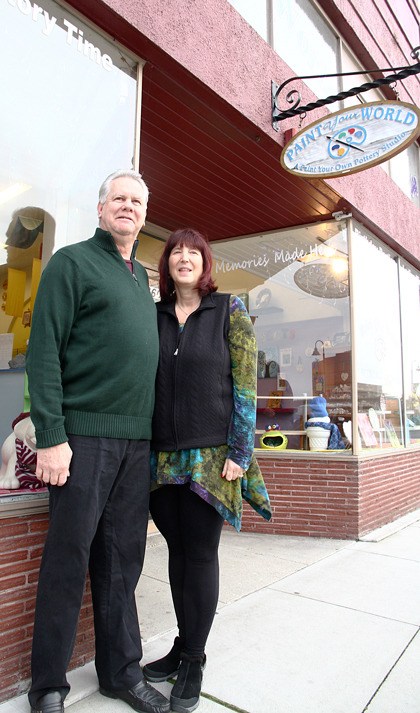What if they made a downtown and nobody came?
That’s what the 85 store-owners in Oak Harbor’s historical business district along Pioneer Way may be wondering as thousands of cars stream by on nearby State Highway 20 with only minimal signage guiding them in.
Downtown lies just a few blocks to the east, but it might as well not exist, some say.
“It is hugely important to improve the signage,” said Margaret Livermore, president of the city’s Main Street Association.
“No one knows there’s anything there. Tourists just pass by and don’t realize there’s shopping, dining, walking. Even some residents don’t know we’re here.”
It’s not that there are no signs for the downtown. There are simply not enough of the right kind, she said.
Southbound Highway 20 has four signs between the city limits and the western end of Pioneer Way, which is the main entrance to downtown.
The northernmost sign simply points the way to the “city center.”
The next three are good-sized identical signs that point the way to the “Historic Downtown and Waterfront” but are crammed with text, hard to read at speed and inconspicuous amidst the roadside’s visual clutter. Northbound Highway 20 has even less signage: one sign pointing to the “city center” and a second like the three encountered southbound.
There is no signage whatsoever at the key intersection of Highway 20 and Southeast Pioneer Way — only a bleak view eastward, with no suggestion of what lies beyond.
Downtown itself is invisible from that junction.
That’s a shame, because a large volume of traffic passes there. In the peak traffic month of August, an estimated 16,600 cars passed it last year, according to the state Department of Transportation.
Even in January, an estimated 14,600 cars passed it.
If even 1 percent of the August traffic made its way into downtown, that would mean another 166 cars. Even if each car held only its driver, that would mean 166 more people downtown — and many cars no doubt hold more than one person.
Wind & Tide Bookshop normally averages about 25 customers a day, said owner Karen Mueller.
If even one-third of that one percent, or 55 people, came into her store, “that could more than double our sales,” she said.
“It would make a huge difference.”
Ron and Laura Apgar, owners of the Paint Your World ceramics studio downtown, said there “is no directional signage to speak of. We’re asking for help from the city — from anybody — to get us a gateway to downtown.”
Ron Apgar said plans to create such a gateway, under discussion a couple of years ago, were put on hold but could be resurrected.
Oak Harbor’s downtown may be historical rather than historic. For many years it was the city’s first and only — that is, historical — business district.
But it may be a stretch to call it historic. It lacks any buildings listed on the National Register of Historic Places, unlike Langley, which has the former Olympic Club, now the defunct Doghouse Tavern, on First Street, which is being renovated by its current owners.
But downtown Oak Harbor means a living to its merchants, and it resonates with residents who want to support them and to honor the past.
“Oak Harbor has a rich and interesting history,” said Scott Hornung, a self-described advocate for Oak Harbor history.
“It should build on that history to aid its revitalization effort.”
Oak Harbor was, of course, settled first by sea, in 1850. For years, residents had closer ties to Camano Island and Port Townsend than to nearby communities on the island, because it was easier to paddle across Saratoga Passage or Admiralty Passage than to trudge through the wilderness to the settlement of Coveland, on Penn Cove, according to online historical encyclopedia HistoryLink.
Road development was the first order of business at the first Island County Commissioners’ meeting in 1853, according to Hornung. Most early roads north of the former Coveland — now San de Fuca — likely connected with Oak Harbor.
But, as the road system grew, north-south traffic began bypassing downtown Oak Harbor, “probably in the early 1900s,” Hornung said. “The downtown was more of a destination.”
Roadmaps from 1929 and 1936 show no main north-south road led through the downtown, said Sarah Aldrich, the Island County Historical Society’s archivist. By 1936, the north-south artery through Oak Harbor was following the path now called Highway 20, she said.
The Main Street Association, which on Jan. 1 became an official Washington State Main Street Community, plans to study the issue of downtown’s visibility, said Livermore.
It will even consider an archway near the intersection of Highway 20 and Southeast Pioneer Way.
“Better visibility will be a priority as we move forward with the Main Street Association,” she said.



